Abstract
Hoffmann, C. E. (E. I. du Pont de Nemours & Co., Inc., Wilmington, Del.), E. M. Neumayer, R. F. Haff, and R. A. Goldsby. Mode of action of the antiviral activity of amantadine in tissue culture. J. Bacteriol. 90:623–628. 1965.—Amantadine hydrochloride has shown antiviral activity in tissue culture, in ovo, and in vivo. Experiments with it during the course of virus proliferation indicate that its antiviral activity is due to inhibition of virus penetration into the host cell. These studies indicate that amantadine hydrochloride is not virucidal at concentrations active in tissue culture. It does not block virus adsorption to host cells, nor does it affect the virus enzyme neuraminidase. In the presence of amantadine hydrochloride, virus adsorbed to susceptible cells remains at the cell surface in an infective state. An attempt to demonstrate high development of resistance to the antiviral action of amantadine hydrochloride in tissue culture has been unsuccessful.
Full text
PDF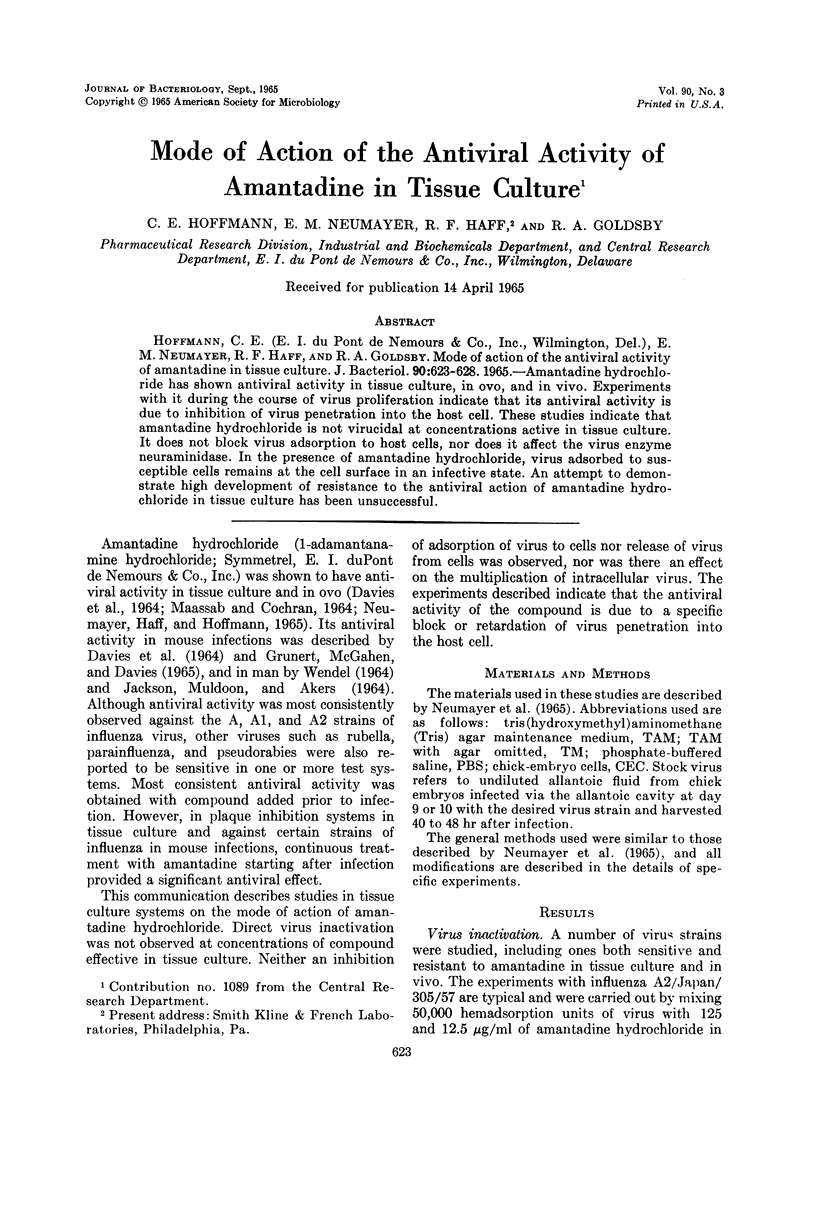
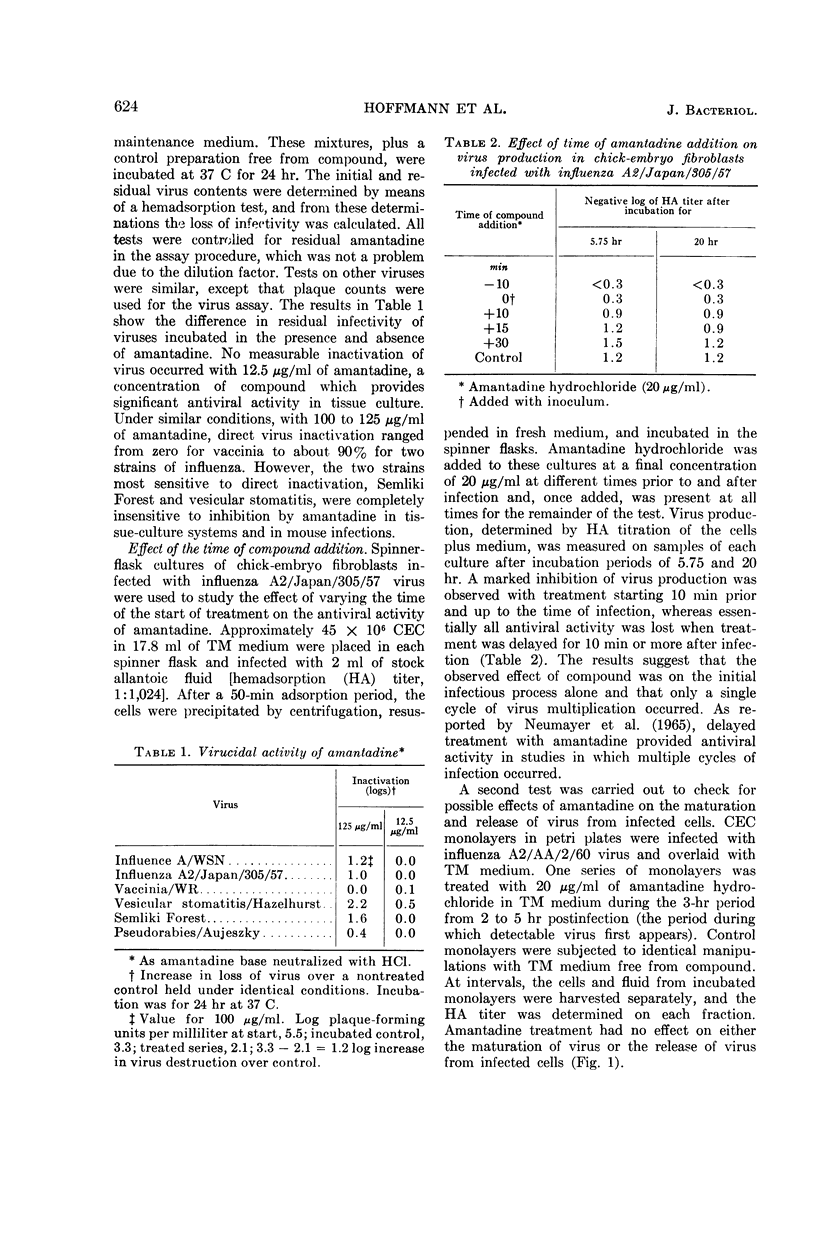
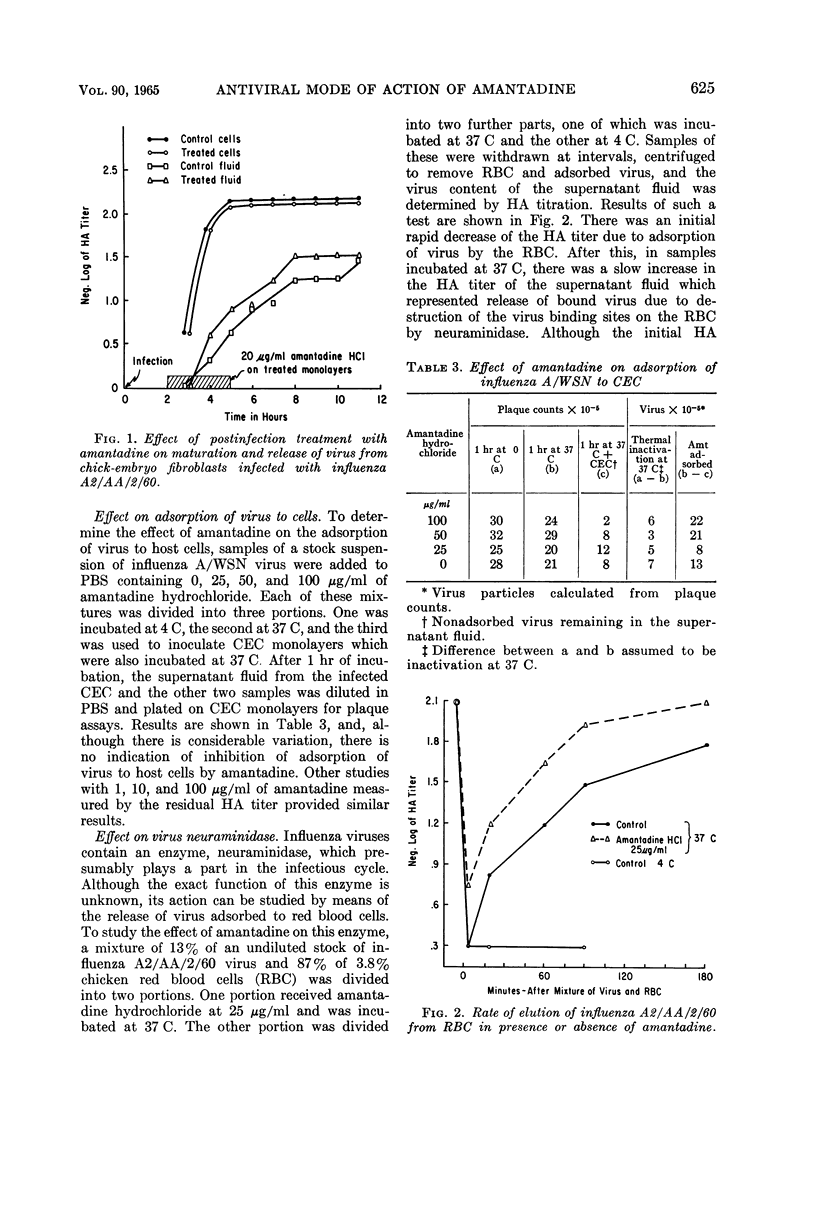
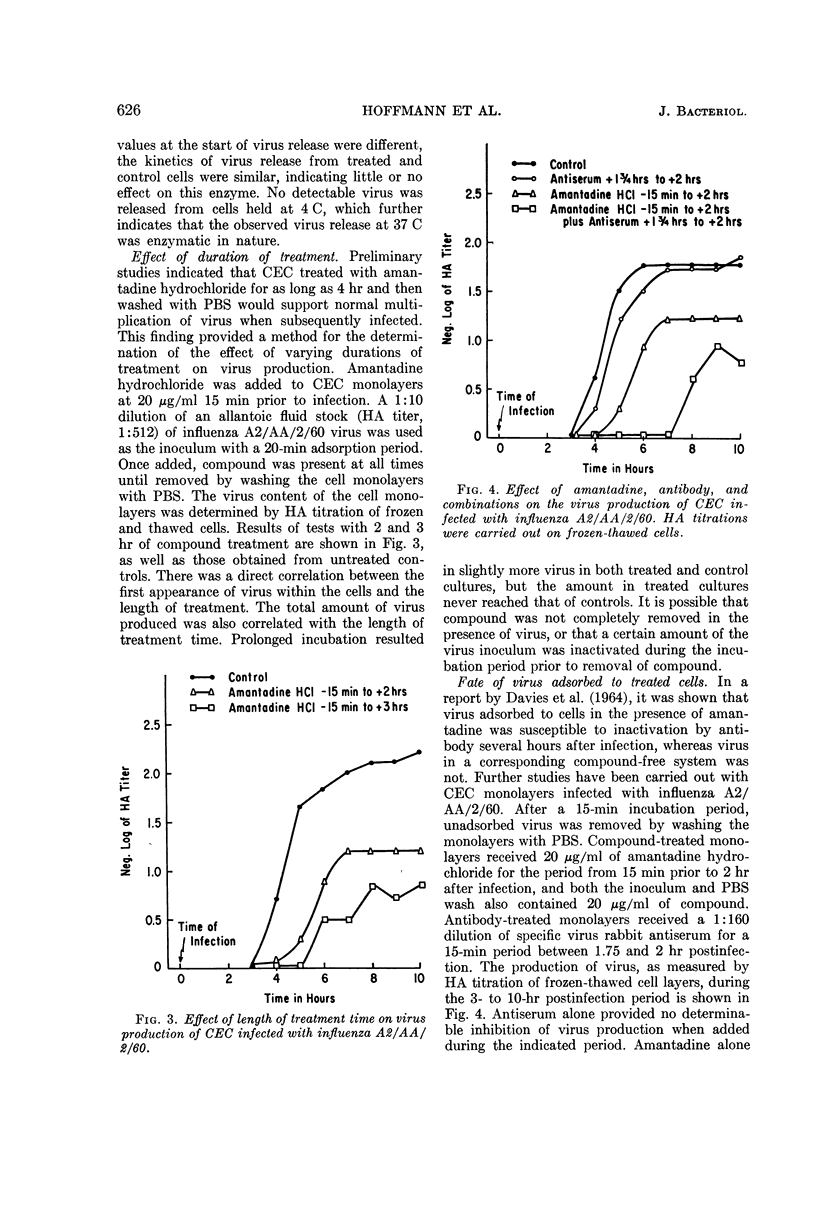
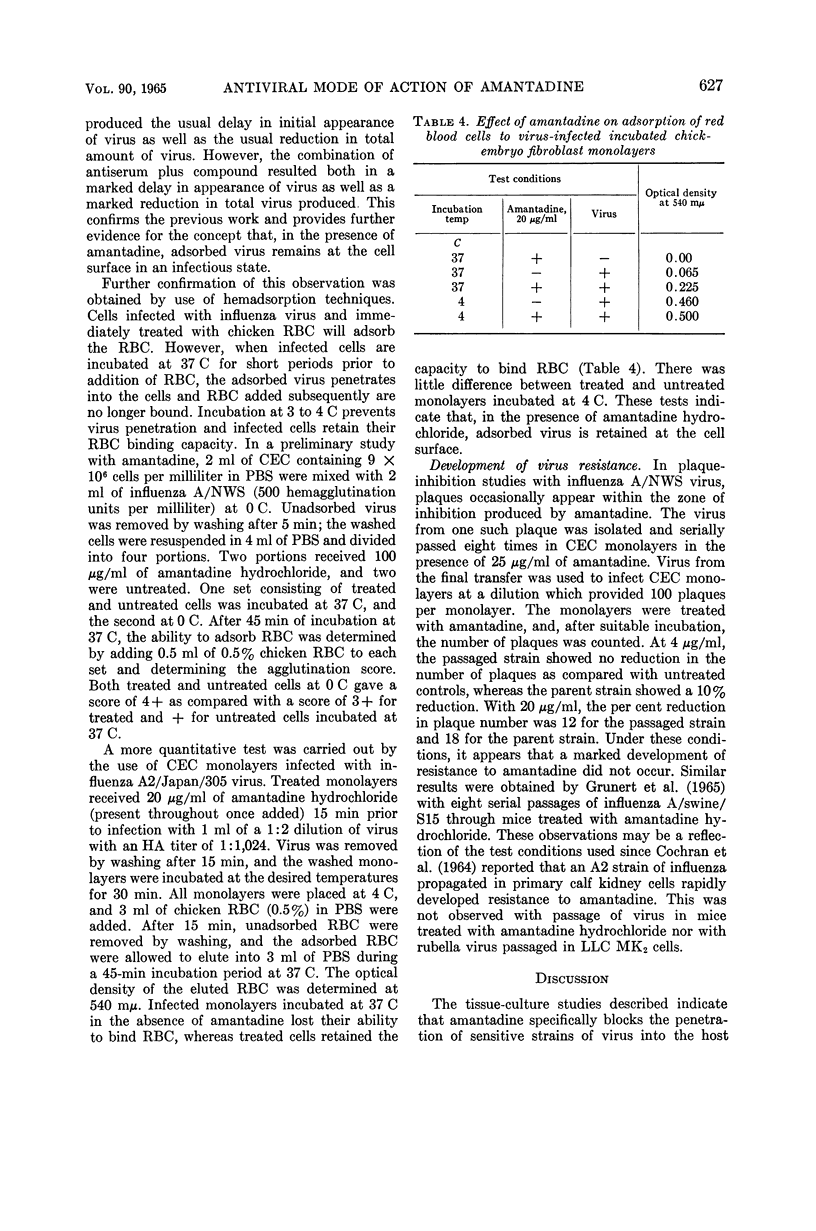
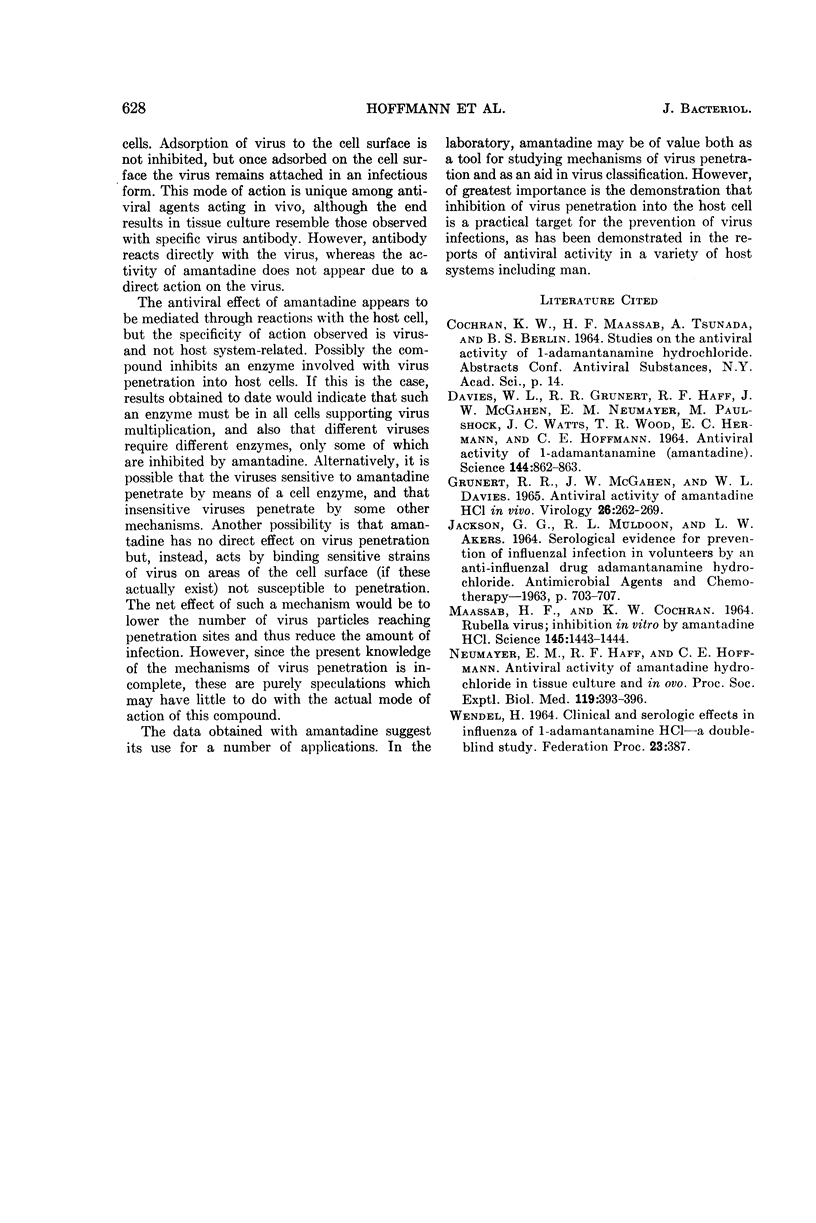
Selected References
These references are in PubMed. This may not be the complete list of references from this article.
- DAVIES W. L., GRUNERT R. R., HAFF R. F., MCGAHEN J. W., NEUMAYER E. M., PAULSHOCK M., WATTS J. C., WOOD T. R., HERMANN E. C., HOFFMANN C. E. ANTIVIRAL ACTIVITY OF 1-ADAMANTANAMINE (AMANTADINE). Science. 1964 May 15;144(3620):862–863. doi: 10.1126/science.144.3620.862. [DOI] [PubMed] [Google Scholar]
- GRUNERT R. R., MCGAHEN J. W., DAVIES W. L. THE IN VIVO ANTIVIRAL ACTIVITY OF 1-ADAMANTANAMINE (AMANTADINE). I. PROPHYLACTIC AND THERAPEUTIC ACTIVITY AGAINST INFLUENZA VIRUSES. Virology. 1965 Jun;26:262–269. doi: 10.1016/0042-6822(65)90273-4. [DOI] [PubMed] [Google Scholar]
- MAASSAB H. F., COCHRAN K. W. RUBELLA VIRUS: INHIBITION IN VITRO BY AMANTADINE HYDROCHLORIDE. Science. 1964 Sep 25;145(3639):1443–1444. doi: 10.1126/science.145.3639.1443. [DOI] [PubMed] [Google Scholar]


